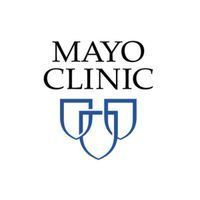Educational Videos Improve CPAP Adherence in Obstructive Sleep Apnea
Although the effects of the educational intervention weren’t seen at 3 months, investigators noticed significant differences relative to standard of care at 12 months.

An updated literature review provided data to assist with the revisioning of quality measures in in clinical practice for adults with obstructive sleep apnea.
Findings from an updated literature review identified 10 quality measure outcomes for clinical care in adult patients with obstructive sleep apnea (OSA) that were approved for publication and implementation by the American Academy of Sleep Medicine (AASM).1 The revised quality measures capture performance data and encourage continuous improvement in outcomes associated with diagnosing and managing OSA in the adult population.
Lead investigator Robin Lloyd, MD, pediatric sleep medicine specialist,
The literature review addressed sleep apnea with the quality measures from clinical practice guidelines, systematic literature reviews, and individual studies. Published articles, abstracts (n = 508) and full articles (n = 92), in the search came from PubMed between 2015 and 2019, were specific to humans and in English. News, letters, editorials and case reports were excluded.
After the revision of the measures by the AASM board of directors, they were posted on the organization website for 30 days for stakeholders to provide feedback. Once the feedback was received, the task force reviewed them and made the final revisions which were then approved by the AASM executive committee. The task force also adapted the measures for new and future technologies as well as for practice and workflow disruptions that happened within the past 2 years such as the COVID-19 pandemic. The measures will be implemented into the AASM Sleep Clinical Data Registry which is a platform that can be used for quality measure validation and for data collection for quality improvement in research.
“With this current set of updated measures, the Task Force attempted to recognize a standard approach that includes practices transitioning from paper to electronic quality measure documentation. The future includes understanding that quality measures will continue to require updates as rapid changes in technologies, data accuracy, and reporting are occurring for diagnostic testing, evidence-based therapeutic options, and monitoring capabilities,” Lloyd and colleagues noted.1
Although the effects of the educational intervention weren’t seen at 3 months, investigators noticed significant differences relative to standard of care at 12 months.
The revised measure description for baseline assessment of OSA symptoms states that the proportion of patients 18 years old of age and olderdiagnosed with OSA that have an assessment documentation of OSA symptoms and/or the use of validated instrument at the initial evaluation. The Task Force also reviewed literature on quality of life measures for these patients and agreed that, although there is not yet convergenience on exactly which health-related quality-of-life instrument should be used, this is an important outcome to measure and document. No changes were made the to measure description, components, or exceptions, as the measure language was deemed still appropriate.
Other revised measure included the use of evidence-based therapy in those diagnosed with moderate to severe OSA or symptomatic mild OSA. Upon review of the therapies listed in the measure and a review of the medical literature, hypoglossal nerve stimulation was added to the definition, as an additional treatment for OSA. Ultimately, the decision was made to add “custom, titratable, and FDA cleared appliances,” to address this concern.
Notably, the measure for overweight or obese adult patients with OSA were revised as they now have to have documentation of their weight and receive education by a clinician at least annually or referred to a weight management specialist. 2 Also, those with blood pressure of 130/80 mm Hg or higher from a visit will now need to have had a discussion with a provider about their elevated blood pressure.
“Digitalized data collection has enhanced the ability to collect process measure data and to analyze outcomes-related data with the goal of improving patient care, Llyod et al noted. “Collection of patient-reported outcomes has increased with e-questionnaires delivered through electronic health record (EHR) patient portals, and some practices have integrated testing and therapy monitoring data into the EHR. Collection and analysis of quality measure “big data” will become increasingly used in the future to direct improved personalized-care models and standards of practice.”1
Keep your finger on the pulse of neurology—subscribe to NeurologyLive for expert interviews, new data, and breakthrough treatment updates.